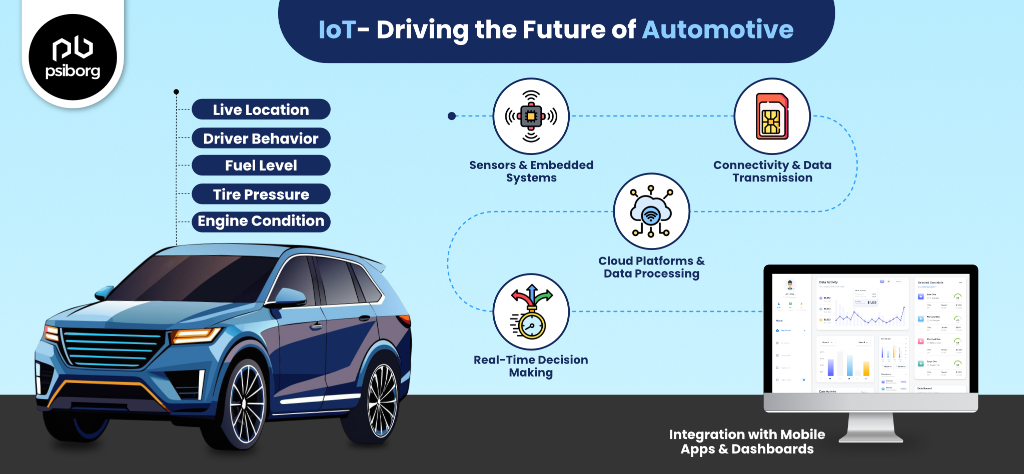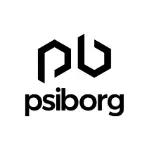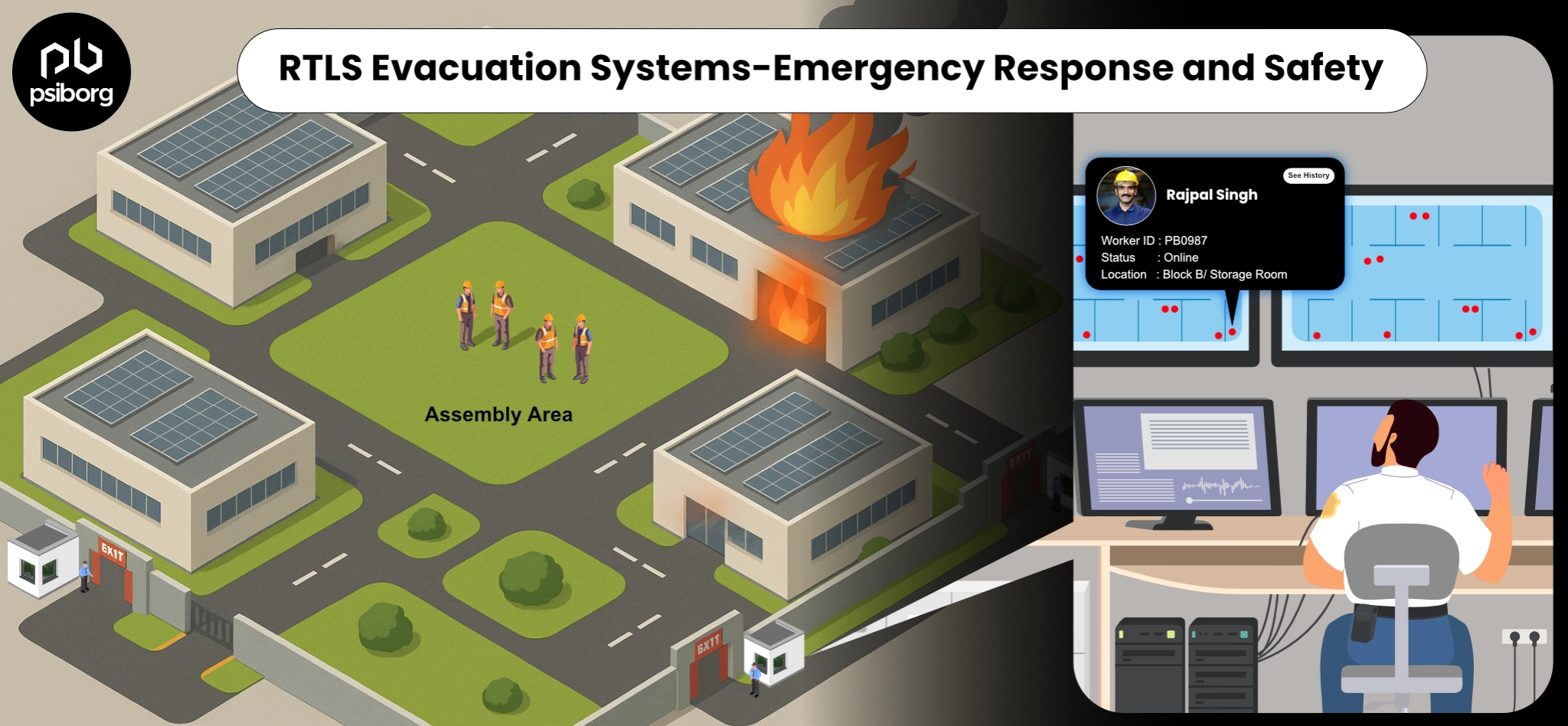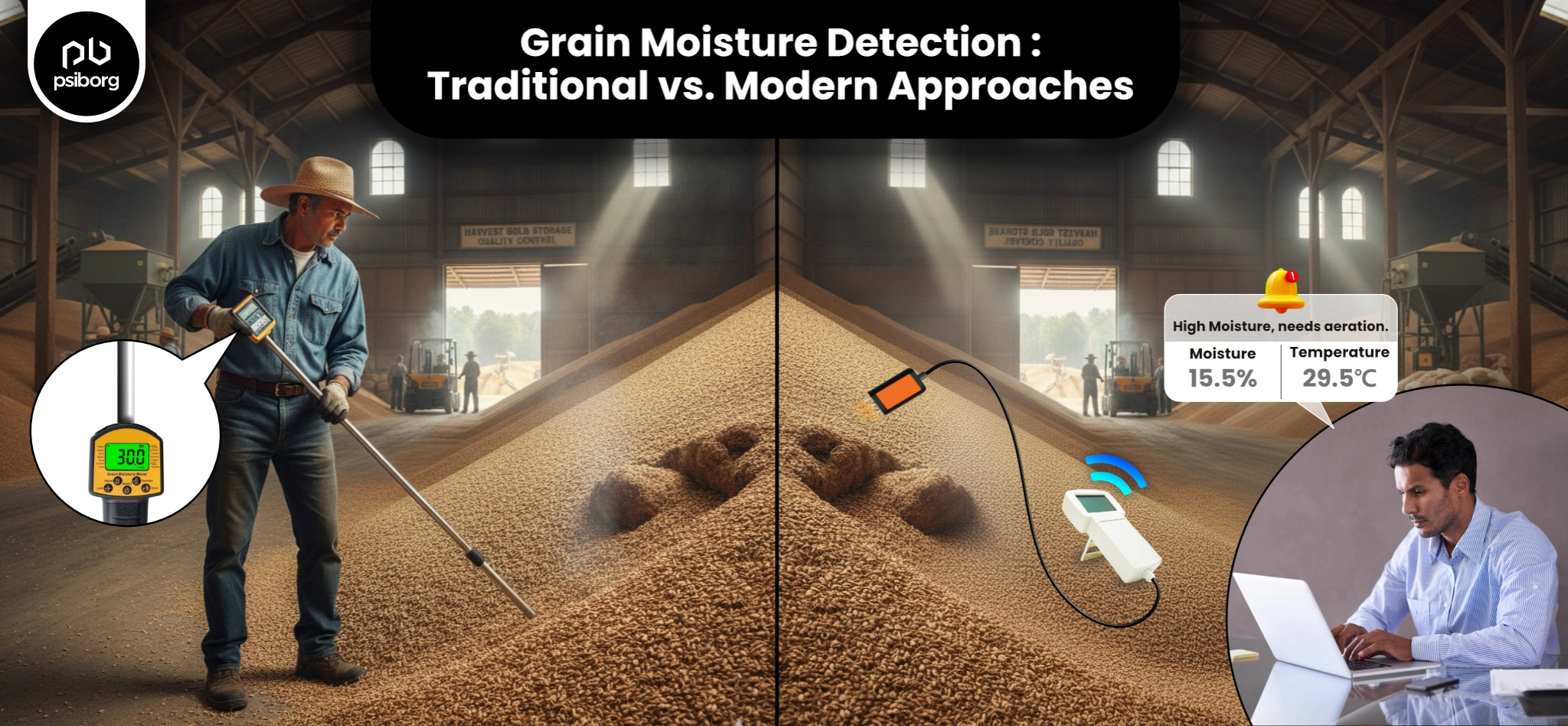Today, the automobile industry is no longer limited to just gears and engines but has now expanded to data, intelligence and connectivity. The automotive sector is getting reshaped by the Internet of Things (IoT) resulting in smart navigation systems, predictive maintenance as well as self-driven cars. The IoT in Automotive Industry has really transformed how we will experience and maintain our vehicles. It would be so incredible if the cars could notify before a breakdown, recommend traffic-free routes or maybe, book their own service appointment!
This is actually possible with automotive IoT which is here to make cars safer and more efficient while offering a more enjoyable drive. Read on to explore how IoT devices in the automotive industry are going to be so revolutionary.

How IoT is Used in the Automotive Industry?
Internet of Things in automotive industry is the introduction of a network of connected sensors, software and devices that are installed in vehicles and infrastructure. The connection of various elements creates smart systems that collect and share real-time data that is useful in enhancing the driving experience, improving safety in the vehicle, optimizing operations and ultimately, reducing costs.
Here’s how it works:
1. Sensors and Embedded Systems
Most modern vehicles come with different sensors that are embedded throughout the vehicle to collect data about the engine condition, tire pressure, fuel levels, driver behavior, live location and even external conditions.
2. Connectivity and Data Transmission
IoT devices in automotive systems work with various connectivity methods. They use 4G/5G, Wi-Fi, Bluetooth, Vehicle-to-Everything (V2X) and other such methods to send the data live to cloud platforms or local control units.
3. Cloud Platforms and Data Processing
The shared data is then processed and analyzed by cloud computing platforms with the help of machine learning algorithms. These platforms are designed to detect patterns, identify irregularities and providing useful insights that would help drivers, manufacturers and fleet owners.
4. Real-Time Decision Making
IoT systems immediately act on the analyzed data. Let’s say that if the tire pressure is low, the system will send a notification to the dashboard. If there’s some functional problem in a part, the driver gets an alert regarding the service.
5. Integration with Mobile Apps and Dashboards
Users can easily stay connected with their vehicles through IoT mobile apps. Through these apps, they can remotely lock or unlock doors, track their vehicle, schedule maintenance or even receive performance tips that come in very handy.
OBD2 Used in Vehicle Diagnostics
One really important feature in this tech-driven transformation of the automotive industry is On-Board Diagnostics (OBD2). This built-in system works to collect data from the sensors of the vehicle and then sends it to diagnostic tools or apps through the IoT platform. Now when this is combined with the incredible internet of things in automotive industry, OBD2 helps with:
- Real-time diagnostics of the engine
- Monitoring of the vehicle health
- Remote data access, especially useful for fleet owners
- Alerts for fuel, brakes or oil levels
The right IoT solution in place supports the transformation of OBD2 from a basic tool into a full-fledged vehicle health monitoring system. It has a major role to play in making automotive IoT use cases highly efficient and useful for both users and manufacturers.
Benefits of IoT in the Automotive Industry
Adopting IoT in automotive industry can be more advantageous than you think. Here’s what it offers:
1. Enhanced Safety
Drivers get real-time monitoring and smart alerts that help in safe driving and preventing accidents. Further, there are features like emergency braking, lane assist and collision alerts that are IoT-powered. Spain is implementing V16 beacons for alerting passerby’s in case of emergency.Some advanced versions consists of SoS and GPS tracking.
2. More Fuel Efficiency
Since IoT sensors can track mileage, fuel consumption as well as driving habits, drivers can make adjustments to achieve better fuel economy. Fleet businesses can also monitor fuel consumption and pick the best routes.
3. Better User Experience
Automotive IoT enhances comfort, entertainment and convenience for passengers by taking care of everything from smart parking to personalized dashboard settings.
4. Lower Maintenance Costs
The real-time data helps with predictive maintenance which reduces the chances of potential major breakdowns. Ultimately, this leads to lower repair bills and the vehicle goes on smoothly for longer.
5. Efficient Manufacturing
The impact of IoT in automotive manufacturing can’t be ignored. Connected machines in factories work are designed to monitor production lines, reduce downtime, improve quality and lower costs in the long run.
Real-World Automotive IoT Use Cases
Automotive IoT is already transforming the roads and offering smarter maintenance to connected driving experiences. Here’s how it’s being applied across the industry in practical ways:
Autonomous Driving Support:
Modern vehicles come with advanced sensors, cameras and IoT-enabled software that are there to collect real-time data. The collected data supports adaptive cruise control, lane-keeping assistance and automatic emergency braking.
Connected Car Services:
IoT-backed services enhance both safety and convenience. They include live traffic updates, weather alerts, navigation assistance and remote locking or starting with mobile apps.
Fleet Management:
For logistics and transportation businesses, IoT-based solutions are very useful and practical. The service providers use it to know the vehicle health, location tracking and ensuring optimum fuel consumption and timely deliveries. An increase in efficiency and leads to reduced operational costs.
Predictive Maintenance:
When the condition of vehicle components like engines, brakes and tires are continuously monitored, It makes it easier for IoT systems to predict failures before they happen and hence, major repair costs can be saved.
Smart Manufacturing:
IoT sensors in automotive factories are used to track equipment performance, detect if there are any irregularities and streamline production lines and this eventually improves the quality of vehicles being produced.
Conclusion
The IoT automotive industry is advancing fast and literally transforming everything right from production to on-road experiences. IoT in the automotive industry is making vehicles smarter, safer and more connected. Manufacturers, drivers or tech enthusiasts, everyone is looking forward to exploring automotive IoT.
PsiBorg offers best-in-class and customized IoT solutions for intelligent transportation so that businesses can tap into the full potential of smart mobility. Choose us and have a competitive edge in IoT in automotive manufacturing and more.
FAQs
In simple terms, it means attaching connected devices, sensors and software in vehicles and supporting infrastructure for collecting and sharing live data. This, along with different smart features, helps in improved vehicle performance and user safety and experience.
Among the many practical uses are vehicle-to-vehicle communication, navigation tracking, predictive maintenance, fleet management and smart manufacturing. All of these aim towards enhancing the efficiency of the vehicle efficiency and experience of the user.
This technology is used via embedded sensors and connectivity solutions. These devices collect all data regarding the vehicle’s health, location, driver behavior and surroundings based on which it offers alerts, real-time updates and remote control on the mobile apps.
Impressively, this market is so rapidly growing that global projections estimate it to reach over a whopping $300 billion in some years. This huge growth is a result of a worldwide increased demand for connected cars, autonomous vehicles and smart solutions.





